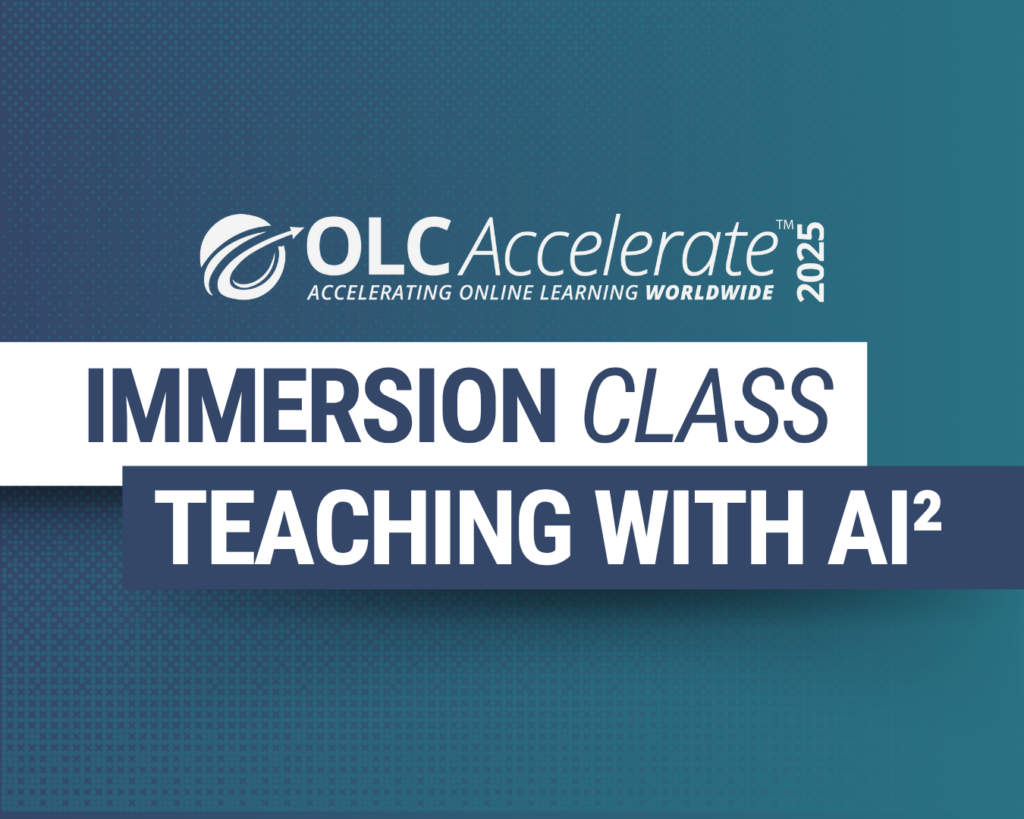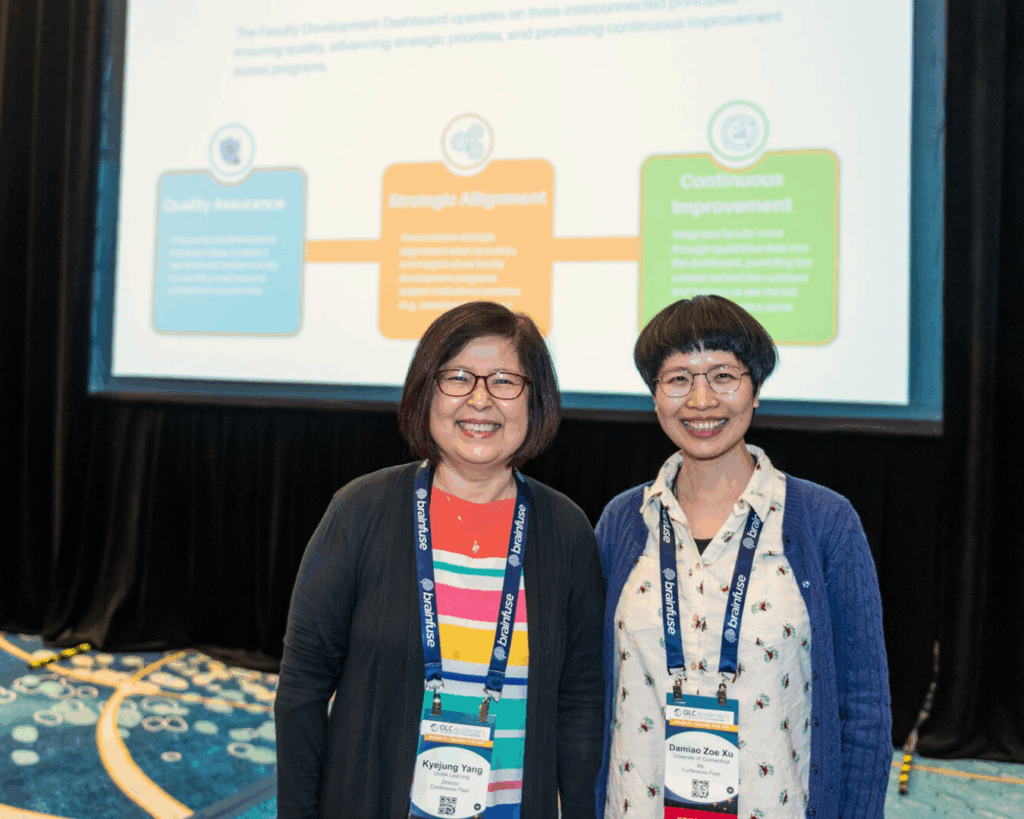The accessibility conversation in higher ed is oftentimes framed around compliance and avoiding legal trouble. However, inclusive design is about so much more than checking boxes. It’s about acknowledging the diversity of our students’ lived experiences and creating conditions where everyone can thrive. The truth is, most educators care deeply about equity. But let’s be honest—between grading, course design, advising, and endless emails, accessibility often gets treated like an extra, when in reality it’s a fundamental right.
Nevertheless, caring isn’t the same as having the time, tools, or training to build accessible, inclusive learning environments—especially at scale. This fall, I’ll be co-leading a pre-conference workshop titled “From Barriers to Bridges: Using AI to Create Accessible and Inclusive Learning Environments”. The session is designed for faculty, instructional designers, technologists, and anyone interested in creating better learning experiences for all students. But before you join me in Orlando, let’s unpack why this work matters and how AI can play a meaningful role.
Why Should You Care About Accessibility and Inclusion?
Today’s students are more diverse than ever, with a growing number navigating disabilities, neurodivergence, and mental health challenges—many of whom never disclose or seek formal accommodations. This expanding diversity challenges the outdated notion of designing for a “typical” student. One-size-fits-all approaches are increasingly misaligned with the real needs of learners navigating cognitive, physical, sensory, and psychological barriers in digital spaces, which ultimately leads to disengagement, lower completion rates, and widening equity gaps.
Accessibility, then, is not just a matter of legal compliance or a “nice to have”. It’s a powerful strategy for student success and retention. Inclusive design practices benefit all learners by making course materials more flexible, navigable, and engaging. For example, captioned videos are essential for students with auditory impairments, but they also support those in noisy environments, multilingual learners, and anyone reviewing content on the go. Even small changes like using high-contrast slides, offering audio alternatives, or avoiding overly complex jargon can reduce cognitive load and foster a greater sense of belonging.
While we don’t always want to lead with the compliance lens, it’s important to acknowledge that updates to ADA Title II regulations are rapidly approaching and institutions will soon be held to higher standards for digital accessibility. But this work doesn’t have to be overwhelming. In fact, with the right tools and support, we can build more inclusive courses more efficiently than ever before. Accessibility should be seen not as a burden, but as a shared opportunity to create better learning experiences from the start.
What AI Can (and Can’t) Do
Now, before you get your hopes up, AI isn’t a silver bullet that will fix accessibility on its own. However, when used thoughtfully, it can be a powerful co-pilot in your teaching practice. Here are just a few ways AI can dramatically reduce the friction involved in making your content more accessible and inclusive:
1. Generate Alt Text for Images
Upload a diagram or photo to an AI image description generator to create alt text in seconds. This makes content navigable for screen readers, as well as assists others who are unable to see an image when it doesn’t load, either due to slow WiFi or the image file accidentally getting deleted.
2. Transcribe and Caption Multimedia
AI-powered tools can assist with transcribing video lectures, adding accurate captions to course videos, and translating dialogue. This supports students with auditory processing challenges, second-language learners, and anyone who may be accessing content without sound.
3. Simplify and Summarize Complex Text
Have a dense article or instructions that students always seem to get hung up on? AI can rewrite them in plain language, adjust the reading level, offer summaries, or generate outlines to help improve clarity and scaffold student understanding.
4. Build Inclusive Assessments
AI can help you brainstorm a range of acceptable approaches or methods a student can use to complete an assignment, as well as assist with drafting transparent and well-aligned rubrics. This reduces barriers for demonstrating learning and supports Universal Design for Learning (UDL) principles.
5. Design Inclusive Course Materials and Visuals
Use AI to evaluate and revise course content for inclusive language, diverse representation, and cultural responsiveness, as well as generate images that reflect a variety of identities and perspectives. This fosters a greater sense of belonging for students from historically marginalized groups and ensures your materials reflect the diversity of the learning community.
While this all sounds great, I want to stress that AI isn’t infallible and human oversight is still essential. Large language models are trained on data that can include bias, stereotypes, or inaccuracies. They might hallucinate facts or make assumptions that don’t hold up under scrutiny. AI can be an incredible thought partner and time-saver, but it can’t replace your professional judgment or ethical responsibility. The bottom line is you’ll still need to manually check for accuracy and ensure accessibility standards are met.
Bridging the Gaps
AI, when wielded with care, can be a powerful bridge between good intentions and practical implementation. It can help level the playing field—not by replacing human empathy or creativity, but by supporting it. Whether you’re just getting started or already deep into this work, I hope you’ll join us for this hands-on, energizing session where we won’t just talk about these possibilities, but actually get to try them out firsthand using a collection of free and low cost tools. Together, we’ll explore how AI can help us move from barriers to bridges and continue building learning environments where all students can thrive.
Ready to turn intention into action? Join us at OLC Accelerate 2025 for “From Barriers to Bridges: Using AI to Create Accessible and Inclusive Learning Environments” and discover how AI can help create more inclusive, accessible learning experiences.
Kaitlin Garrett has worked in the higher education space for about 15 years and possesses a strong passion for creating accessible and inclusive learning experiences. She is currently an instructional designer in the OLC’s Center for Professional Learning where she collaborates with subject matter experts on the design, development, and implementation of scalable and engaging programs that adhere to quality standards. She manages the workshop pathways related to equity, inclusion, and belonging and emerging technology and tools, the suite of self-paced workshops, and the microlearning library. She also oversees the planning, management, and technical execution of OLC’s webinar program.





